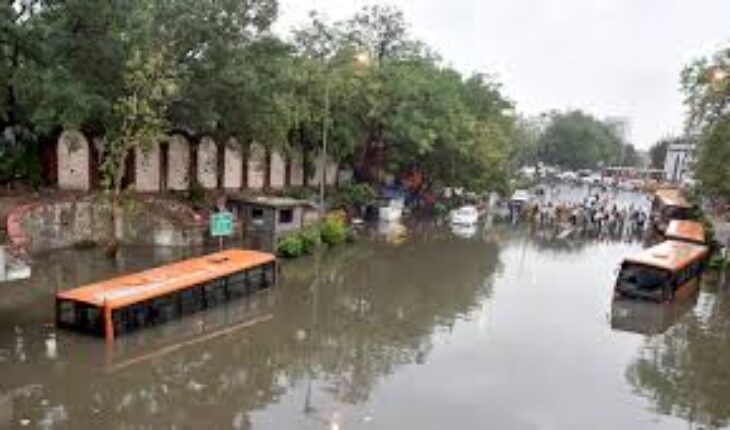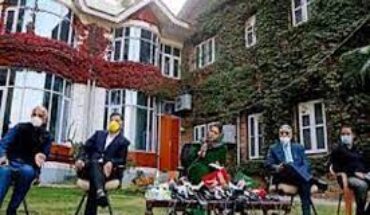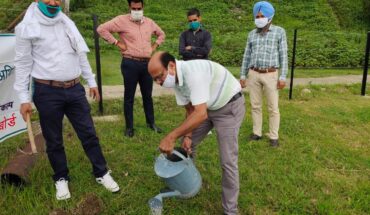New Delhi : Delhi gets almost submerged in every rain, water-logging on the roads and streets are also common. Every time the flood like situation arises in the National Capital its poor drainage system is held responsible. This year also after the monsoon rains, Yamuna is flooded and is flowing above the danger mark. Experts recommend reviving the water bodies of the city.
It has been more than a week now that Yamuna is flowing above the danger mark leading to flood like situation in many parts. The primary reason behind this rise of water level is release of water from Haryana barrage. This barrage is receiving huge amount of water from Himachal.
The Yamuna in Delhi is flowing above the danger mark of 205.33 metres and it reached 206.44 metres now. The poor drainage system of Delhi has been discussed by every government since 2009 but nothing concrete has been done till now. The Lieutenant Governor Tajendra Khanna had asked civic agencies to prepare a master plan for Delhi’s drainage system. The former Chief Minister of Delhi Shiela Dixit had also asked IIT Delhi to prepare a drainage master-plan for Delhi. IIT Delhi in its final report in 2018 had recommended that the practice of puncturing sewer lines and discharging sewage into storm drains should be immediately stopped. The priority should be given to separation of sewage and flood water drainage system, the report said. However the report was rejected by the technical staff of the government stating discrepancies in the data given by the IIT Delhi. Therefore the master plan of Delhi’s drainage system remains pending.
Experts views on Delhi Floods.
According to retired IAS officer Ramesh Negi , who have worked in MCD, Jal Board and urban departments department of Delhi, half of the Delhi is unplanned and all these departments are responsible for it. Many areas of Delhi are full of garbage waste and construction waste. In Many areas of East Delhi, civil lines and outer Delhi, drains are covered. Most of the Jal Board members suggest that flood plains, wetlands and water bodies have to be made free from encroachments. Emphasis should be laid on drainage system, besides conserving the rain water. The two main reasons making Delhi Flood prone are, First more and more surface is being concretized and covered, creating more runoff and secondly weather impacts that the landscape is incapable of handling.
According to the Delhi Development Authority (DDA) the Yamuna floodplains in Delhi is around 97 square kms or 7% of the city area. But much part of it has been encroached upon by the settlements and large development projects which have hindered the free flow of the river. The city’s 2041 master-plan proposes to regularize some of these settlements and projects by regulating it. The excess water released from a nearby barrage and heavy rainfall triggers the flood and these are the reasons that Delhi witness flood every time in rainy season.
In order to regulate the speed of water wetlands perform a major role. These wetlands can be of different kinds lakes, swamps , marshes or artificial reservoirs etc. wetlands are slow water and when water enter them they release sediments and it gets a accommodating space to spread.
According to the city’s wetlands Authority, Delhi has a total of 1040 water-bodies and wetlands but that are not officially notified. According to a report published in The Hindu newspaper the Wetlands Authority received requests from agencies to delist over 200 wetlands because they have dried up or encroached. “We are in the process of notifying some wetlands, without notification there can be no planning and funds can also not be allocated for their protection, says Madhu Verma an Environmental Economist, who chairs a technical committee advising the Delhi wetlands Authority.
After the floodwaters breached the danger mark in July, the governments of Delhi and Haryana started fighting over water released from the old Hathnikund barrage located in Haryana. It was built in 1996 to divert the water into the eastern and western canals of Yamuna. After facing flood like situation in Delhi, Delhi CM Arvind Kejriwal started blaming Haryana government for releasing the excess water in the river. While Haryana govt. retaliated by saying it had followed the norms. In July 10 the peak discharge from the barrage was 3.59 lakh cusecs.
According to Himanshu Thakker , who is the Co-ordinator of the South Asia Network on Dams, Rivers and People (SANDRP) the water released from Hathnikund barrage does not explain the extent of flooding the city, he attributes concretization of the floodplains and destruction of water bodies within the city.
Thousands of people live on the floodplains of the Yamuna, many of them have converted the agriculture land for their livelihood. The Akshardham temple in East Delhi has been built on the floodplain with post facto environmental clearance. The Common Wealth Games village also came up on the floodplains.






